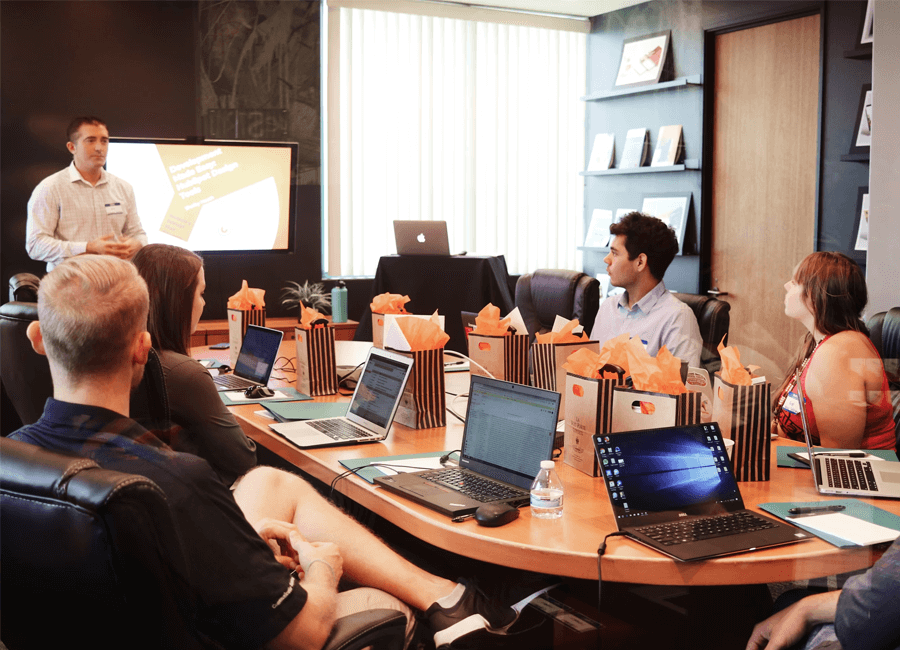As humans, we're all naturally drawn to shiny objects; and if we're being honest, the market research industry is no different. We are often looking to the new, latest shiny things, whether that’s new tech, new methods, or new tricks to help us deliver the best outputs possible.
But my challenge to you is twofold – is the market research industry forgetting where we have come from by favouring newer complex solutions? And are we making it harder for ourselves by doing so?
I attended the MRS B2B conference and had some very enlightening conversations with other insight experts about current working practices, mindsets and favoured methodologies, different usages of technology, etc. And whilst watching some of the speakers, I sat there feeling a little out of my depth. They were talking about, in some cases, some complex methodological approaches, whereas myself and Stuart Hotchkiss from British Gas were about to talk about a very simple tracker project. I started wondering whether we had made a horrible mistake using this straightforward project example to help demonstrate how British Gas has been embedding the customer voice in the business and using it to drive action across the board.
The conversations I have since had have reminded me of something that I have always tried to focus on during my market research career to this point, and that is: we can use simple solutions to solve complex business issues. We don't always need to go big and answer complex problems with complex answers.
Obviously, there is a time and place to look for those more complex solutions and use those complex methodologies, otherwise, they wouldn’t have been integrated into market research practices so well. But what I want to focus on is how we can harness the power of simplicity to still generate effective and impactful insights.
| Tweet This | |
| Are researchers making market research harder by favouring complex solutions over simple ones? When should we use simple vs. complex solutions? |
Why Should We Use Simple Solutions?
In a world where business decisions are being made faster than ever before, there is a real need for insight teams to keep up. Sometimes, simple solutions are the best way to achieve these quick insights.
While complex projects have their place (complex solutions are usually great for more complex questions), in my experience, the timescales required for these complex solutions are often considerably longer, which doesn't correlate with the need for quick turnaround delivery. Where stakeholders and insight teams do have the luxury of more time, then, by all means, use those complex methodologies.
However, there is an alarming trend of market research budgets falling according to sources such as the Bellwether Report. So, these complex solutions also cost more than the simple solutions, and in our situation where we need to show better-than-ever ROI on projects to justify future funding, using simpler, straightforward approaches where we can is a way to gain back traction and better budgets.
Think about your quant sample costs, a short simple survey will have a much lower CPI than a longer more complex survey. It's a bit of a crude example, but it sums up project delivery as a whole. It is a balancing act, where we must consider: what are the pros and cons of a simpler, straightforward process vs. a more complex solution?
Choosing Between Simple vs. Complex Solutions
Picture this: a stakeholder approaches you and says…
"We want a quick and dirty read on this"
While this likely will send shivers down the spine of insight experts, I'm actually going to challenge the negativity around this, because sometimes they’re right.
If it's said in relation to a strategic piece, you will see me pulling on my trainers and running to the nearby hills; but if they just want to sense check something or get an early toe-tip, then it is an ideal opportunity to use a simple approach to give them what they need. I am a great advocate for a quick poll or simple survey when we aren't influencing the main direction of the business, but rather we just need to answer an extra question that perhaps came up in a debrief, or strategic workshopping session.
So, how do we decide if a simple solution is the right way to go? Personally, I break down the brief/questions/challenge into their component parts and look at those, and then ask myself, ultimately, what I am trying to do with this research?
One of my biggest learnings in the early stages of my career was not being scared by what seemed like a complex project - as I mentioned before, breaking it down into the component parts makes it feel a lot less scary. Make it feel like lots of simple elements, rather than one complex one. Even a simple methodology can be made to feel more complicated through clever techniques for fieldwork, analysis or reporting.
Though with complex fieldwork techniques, don't lose sight of the participant and their experience. On this note, I agree with Gareth Bowden in his recent blog, "the further we obfuscate our objectives and methods, the less trust we have from respondents, and therefore the less engagement and honesty we can expect from them." However complex you make the research project, we still need to make it simple for your participants on their end.
Simple Doesn't Mean Less Effective
As insight professionals, we are responsible for bringing the customer voice to businesses and helping drive action from the insights.
If you're running through a debrief with some complex methodologies and frameworks which the stakeholders are struggling to get to grips with, are they going to walk away from that session really understanding what it means to them? Again, it comes back to timing and knowing your audience. If complex approaches have been used in the approach or the analysis, to make it most effective, do we need to simplify it so that we know we are positioning things in a way to best drive action?
A video of customers talking doesn't need to be turned into an animated movie worthy of an Oscar, in fact, I'd question whether that takes away from its ultimate purpose. We have seen multiple times first-hand how impactful a raw cut of customer videos can be - ultimately, we want the customers to do the talking and trigger the emotion within the audience. We want their voices to be remembered, not the clever animations that have been used.
| Tweet This | |
| There is a place for complex solutions in market research, but is it to solve simple problems? Here's an example of simplicity in action that sparks wide-ranging and impactful change. |
Simplicity in Action
Stuart talked about how he helps drive action off the back of projects; as part of the briefing process, he asks stakeholders what actions they want to be able to take off the back of the research; a perfectly sensible for designing the best approach.
But it is not only used for that, it then becomes a point to loop back on, a few months later. A simple question to stakeholders "Have you done what you planned to with the outputs from this project?". Why is that simple question so powerful? Well, it reminds them about what they were planning on doing initially, and then if not, it makes them think 'why not?'. It's also a way of helping manage budgets - if stakeholders repeatedly ask for research and then don't do anything with it, then it helps prioritise project requests.
One of our clients talks about their customer community being a way to deliver projects at twice the speed and half the costs (compared to running each project as an ad hoc piece of work). Yes, it takes skills to run a community successfully, but they are a relativity simple approach; put a group of consumers together, ask them questions on a regular basis, allow them to talk about their customer experiences and what you learn from them will be eye-opening.
If you watched my and Stuart's presentation at the B2B conference, you'll have heard us both talking about doing simple things to help the results land and drive that action around the business. That particular project is living proof that simple approaches aren't any less effective. If you feel that a simple solution is the best one, and you have a strong rationale for it, believe in it - don't fall victim to the shiny object tempting you down an unnecessary, complex path.


















